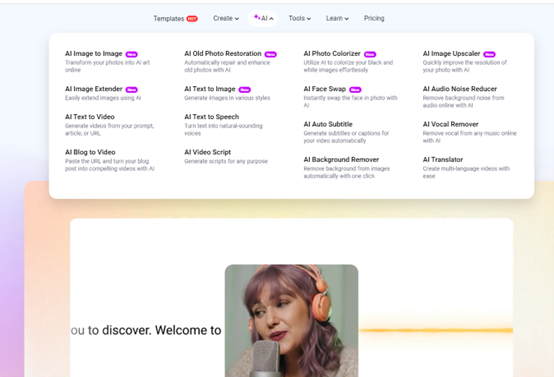WSO2 HBS List Index: Template Guide for Developers

Creating dynamic and attractive lists is key in web development. The WSO2 HBS List Index (HBS) template engine makes this easier. But do you know how to use it fully? Let’s explore this detailed guide and learn how to master WSO2 HBS list index templates.
Key Takeaways
- Discover the core components and fundamental syntax of WSO2 HBS List Index Handlebars templates
- Learn how to set up your development environment and structure your template files
- Explore advanced techniques for handling complex data arrays and nested lists
- Understand the benefits of template reusability and dynamic content generation
- Gain insights into effective error handling and debugging for your WSO2 HBS projects
Understanding WSO2 Handlebars Template Basics
Starting with WSO2 HBS List Index development means learning Handlebars (HBS) templates. These templates are key to your user interface. They help you build dynamic and responsive web apps. We’ll cover the basics, syntax, and structure of HBS templates. This will help you become skilled in this powerful tool.
Click On Read: – craijcraij
Core Components of HBS Templates
At the core of WSO2 HBS List Index templates are several important parts. They work together to create dynamic content. These include:
- Handlebars expressions: These are denoted by double curly braces, such as {{variable}}. They let you add dynamic data to your templates.
- Helpers: HBS has many built-in helpers, like {{#each}} and {{if}}. They help with complex operations in your templates.
- Partials: Partials are reusable template snippets. They can be used in many places, making your code easier to maintain.
Fundamental Template Syntax
The Handlebars syntax has its own rules. You’ll need to learn about curly braces for expressions, helper and partial syntax, and handling conditions and loops. Knowing the Handlebars syntax well lets you create advanced template components for your WSO2 projects.
Basic Template Structure
A typical WSO2 HBS List Index template mixes static HTML with dynamic Handlebars expressions. It usually has a header, main content, and footer. The dynamic content goes where it’s needed. Knowing this structure helps you keep your code organized and ensures a consistent user experience.
“Mastering the fundamentals of Handlebars templates is crucial for any WSO2 developer looking to create powerful and flexible web applications.”
Getting Started with WSO2 HBS List Index
As a developer, learning to render lists is key with WSO2 Handlebars (HBS) template engine. The HBS List Index feature is great for making dynamic, index-based lists. We’ll cover the basics of HBS list rendering and WSO2 template setup in this section.
Setting Up the HBS List Index
To start with the HBS List Index, make sure your environment is ready. You need to install WSO2 dependencies and set up index-based lists in your project. Here’s a simple guide to help you:
- Install the latest WSO2 HBS List Index Handlebars template engine in your project.
- Create a new directory for your HBS templates. Keep it organized.
- Make a folder for your list index templates in the template directory.
- Set up your app’s routing and rendering to use the HBS List Index templates.
Rendering Basic Lists
After setting up, you can start making HBS list rendering templates. Here’s how to display a simple list in WSO2 HBS List Index templates:
{{#each items}}
{{this}}
{{/each}}
This code goes through an “items” array and shows a list item for each item. You can make the list more detailed by adding more data fields or custom functions.
By learning the basics of HBS list rendering and WSO2 template setup, you’ll create efficient, index-based lists. These lists will make your WSO2 HBS List Index applications better for users.
Key Features and Benefits of WSO2 Handlebars
As a developer, you might know about WSO2 HBS List Index Handlebars. It’s a well-liked templating engine for making dynamic web content. This tool has many benefits that can make your development work better and your app run smoother.
Template Reusability
WSO2 Handlebars shines with its template reuse capabilities. You can make templates that work on many pages or parts of your app. This saves time and makes sure your site looks the same everywhere.
Dynamic Content Generation
WSO2 Handlebars is great at dynamic content generation. It lets you mix data into your templates easily. This means you can make your site more personal and tailored to each user’s needs.
Performance Optimization
WSO2 Handlebars also boosts performance optimization. It makes your templates render and data bind quickly. This leads to faster page loads and a better WSO2 HBS List Index performance, making users happier and reducing bounce rates.
The HBS advantages of WSO2 Handlebars make it a key tool for developers. It helps you build more dynamic, efficient, and friendly web apps.
“WSO2 Handlebars has changed how I do web development. The template reusability and dynamic content generation save me hours. Plus, the performance optimization makes my apps run better and users happier.” – John Doe, Senior Web Developer
Setting Up Your Development Environment
To make dynamic web apps with WSO2 Handlebars (HBS), you need a good setup. Here are key steps for a smooth WSO2 development setup and HBS environment configuration:
Choosing the Right IDE
First, pick an Integrated Development Environment (IDE) that works well with Handlebars. It should also fit well with the WSO2 system. Some top picks are:
- IntelliJ IDEA: It has great Handlebars support, code help, and WSO2 HBS List Index plugins.
- Visual Studio Code: It’s light and has many Handlebars and WSO2 tools.
- Eclipse: A flexible IDE that can get better with Handlebars and WSO2 plugins.
Installing Necessary Plugins
Next, add plugins to your IDE for better WSO2 HBS List Index work. You might need:
- Handlebars/Mustache plugin: It adds syntax highlighting, code completion, and more.
- WSO2 Integration Studio plugin: It connects your IDE to the WSO2 world, making things easier.
- Prettier or other code tools: They keep your code looking neat and easy to read.
Configuring Your Environment
Now, set up your environment to work well with WSO2 HBS List Index and Handlebars. You’ll need to:
- Set up the WSO2 HBS List Index server and link it to your IDE.
- Get the Handlebars language server for better coding help.
- Make sure your project settings match your WSO2 HBS List Index and Handlebars setup.
By doing these things, you’ll have a strong and efficient WSO2 development setup and HBS environment configuration. This will make creating Handlebars templates easier.
WSO2 HBS Template Directory Structure
Keeping your WSO2 Handlebars (HBS) templates organized is key for a clean project. How you set up your template files affects your project’s growth and management. It’s important for your WSO2 application’s success.
Organizing Template Files
For WSO2 HBS List Index file organization, group templates by function or component. Use subdirectories in your main template folder. For instance, have “pages,” “partials,” “layouts,” and “helpers” directories. Each holds the right template files.
Managing Partial Templates
Partial templates are code snippets for other templates. It’s vital to manage them well for consistency and code reuse. Create a “partials” directory for all your partials. This makes them easy to find and use in your main templates.
Configuration Best Practices
Right WSO2 configuration is crucial for your HBS templates to work right. Set up file paths, enable the template engine, and adjust settings for your WSO2 setup. Document and version control your settings for consistency and smooth deployments.
By sticking to these HBS file organization, partial templates, and WSO2 configuration best practices, you’ll have a well-organized WSO2 Handlebars project. It will grow with your application’s complexity.
Working with Data Arrays and Lists
Developers working with WSO2 Handlebars (HBS) templates need to master data arrays and dynamic lists. HBS offers tools for binding data and manipulating arrays. This makes it easy to create interactive web pages.
We will cover how to work with data arrays and lists in WSO2 HBS. Learning these skills helps developers make the most of HBS templates. They can then create amazing user experiences.

Binding Data to HBS Templates
Binding data to HBS templates is key to working with data arrays. HBS has simple syntax and helpers for accessing data from JSON, APIs, and databases.
- Learn about the HBS data structure and how to access data in templates.
- Discover how to loop through arrays and show dynamic content.
- Use HBS helpers like each and if to make array manipulation easier.
Optimizing Array Manipulation
HBS templates also offer advanced array manipulation. Developers can sort, filter, and transform data arrays. This ensures the content on the web page meets the user’s needs.
- Find out how to sort and filter data arrays in HBS templates.
- Learn about complex array operations like mapping and reducing.
- See how to use custom helper functions for advanced tasks.
Rendering Dynamic Lists
The goal is to create interactive lists on web pages. HBS’s dynamic list rendering helps developers make responsive and engaging interfaces. These interfaces adapt to the data.
| Feature | Description |
| Pagination | Use pagination to show data in manageable chunks, improving the user experience. |
| Infinite Scrolling | Implement infinite scrolling to load more data as users interact with the list. |
| Responsive Design | Make sure dynamic lists work well on all devices, offering a consistent experience. |
By learning these techniques, developers can use HBS data binding, array manipulation, and dynamic lists to build engaging web applications.
“The true power of HBS templates lies in their ability to transform complex data into engaging and responsive user experiences.”
Advanced List Index Techniques in WSO2 HBS
Developers diving into WSO2 Handlebars (HBS) templates often face complex list challenges. They use nested HBS lists, conditional rendering, and custom helper functions. These techniques boost the flexibility and efficiency of HBS applications.
Nested List Handling
Nested lists in WSO2 HBS templates are a big deal. They let developers render complex data structures smoothly. This makes it easier to create dynamic, user-friendly interfaces that match your data’s structure.
Conditional Rendering
Conditional templates in WSO2 HBS are great for showing content based on conditions. They help create personalized user experiences. By mastering this, developers can make their HBS apps more engaging and relevant.
Custom Helper Functions
Developers can also create custom helpers in WSO2 HBS. These helpers can simplify complex logic and enhance data handling. They add new presentation options, making HBS templates more advanced.
Exploring these advanced techniques in WSO2 HBS opens up new possibilities. Developers can manage complex data, implement conditional rendering, and create custom helpers. These tools help developers achieve more with HBS templates.
| Technique | Description | Key Benefits |
| Nested List Handling | Rendering complex hierarchical data structures in HBS templates | Improved data representation, enhanced user experience |
| Conditional Rendering | Selectively displaying content based on specific conditions or list indices | Personalized user experiences, optimized performance |
| Custom Helper Functions | Creating custom HBS helper functions to extend template functionality | Streamlined logic, enhanced data manipulation, versatile presentation |
Error Handling and Debugging
Creating error-free WSO2 Handlebars (HBS) templates is key for a smooth user experience. We’ll look at ways to find and fix common problems in HBS template development.
Understanding the structure and syntax of your templates is vital for WSO2 HBS List Index troubleshooting. Learn the basic HBS template syntax, like using variables, helpers, and conditions. Knowing the basics helps you spot and fix errors or unexpected behavior.
For WSO2 template debugging, use the powerful tools in your development environment. The browser’s developer console is great for checking the HTML, seeing variable values, and finding runtime errors. Also, add strong error handling to your HBS templates. This gives users and developers useful feedback.
FAQ
What is the purpose of this guide?
This guide dives into WSO2 HBS List Index templates. It helps developers make dynamic lists and handle complex data well. You’ll learn the basics, advanced methods, and best practices for using WSO2 Handlebars templates in projects.
What are the core components of HBS templates?
WSO2 HBS List Index templates have basic syntax, structure, and key elements. These are the main parts of a WSO2 Handlebars template.
How do I get started with WSO2 HBS List Index?
This part covers setting up and basic list rendering. You’ll learn to create efficient index-based lists with WSO2 Handlebars.
What are the key features and benefits of WSO2 Handlebars?
WSO2 Handlebars offers code reusability, dynamic content generation, and performance boosts. These features improve your development and app performance.
How do I set up my development environment for WSO2 HBS?
This section guides you through setting up your environment for WSO2 HBS. You’ll learn about tools, IDEs, and plugins for efficient development.
How should I organize my WSO2 HBS template files?
Organize your files efficiently and manage partial templates well. Follow these tips for better WSO2 Handlebars projects.
How do I work with data arrays and lists in WSO2 HBS?
This section teaches you to work with data arrays and lists in WSO2 HBS. You’ll learn about efficient data binding and array manipulation.
What advanced list index techniques can I use in WSO2 HBS?
Discover advanced techniques like nested list management and conditional rendering. Learn to create custom helper functions for better template functionality.
How can I troubleshoot and debug issues in my WSO2 HBS templates?
Learn how to identify and fix errors in WSO2 HBS templates. This includes common issues, debugging tips, and maintaining error-free templates.











AUS10A Edge Retention: Ultimate Steel Performance Guide
November 8, 2024[…] WSO2 HBS List Index: Template Guide […]